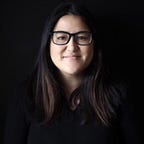How KPCC turned to snail mail and email to reach new audiences
In 2018, early childhood education and development reporter Priska Neely spent months reporting on the black infant mortality crisis in Los Angeles County, where black babies are three times as likely to die before their first birthday than white infants. And, from the very start, she invited community members to join her in the reporting process.
Neely produced a powerful series of stories that sparked conversations across Southern California. She was invited to speak to medical students and sororities, at health conferences and at libraries. She embraced the opportunities to distribute her work outside of our traditional channels (radio and digital).
KPCC decided to hold an event focused on racism and its effect on the health outcomes of black infants. The goal was to attract a crowd that could most benefit from her research: African American women in their early childbearing years. This is a segment of the population deeply affected by the mortality crisis, yet one largely outside of KPCC’s traditional radio audience; African Americans represent roughly 8 percent of our listenership. We set the goal of having an audience of at least 100 people that was majority African American.
Attracting a new audience called for a new approach. Relying primarily on the traditional formula of on-air promotion and KPCC In Person social media just didn’t make sense when we knew the audience we wanted was not a core part of KPCC’s existing audience.
It was the perfect opportunity to implement ideas we had identified when redesigning KPCC’s early childhood education coverage: the use of paper materials as a distribution method. It’s a high-touch, low-tech approach.
With a $2,300 grant from USC Annenberg’s Center for Health Journalism and in collaboration with KPCC In Person producer Charlotte Duren and USC engagement editor Olivia Henry, we distributed nearly 6,000 informational postcards. We used the U.S. Postal Service’s Every Door Direct Mail marketing service to send postcards to residents in predominantly black neighborhoods with high rates of infant mortality. The postcards featured a unique URL so that we could track conversions. Health organizations also volunteered to distribute the postcards. Printed fliers were displayed at an L.A. County Library branch near the venue, and digital fliers were shared by various organizations.
Additionally, the team built a database of student and youth groups, media outlets, influencers, black women’s health groups, and other LA organizations that allowed us to connect via email and social media with more than 200 people.
The results demonstrate a clear early win: More than 400 people registered for the event. The no-show rate was lower than at recent events; roughly 200 people attended the program (twice our original goal). We had to open an overflow room had to accommodate attendees. More than 90 percent of the audience presented as black women, including high school students, grandmothers, medical professionals, and others.
An early review of the website analytics indicates that about 330 unique visitors came to the black infant mortality landing page from the unique URL on the postcards. Roughly 51 percent of people who RSVP’d said they had heard about the event in a way other than our traditional outreach model.
The conversation was informative, with the host and panelists sharing a mix of advice and personal experiences.
Audience feedback (in-person and online) was extremely positive.
On Twitter, @HeyImIvanna described the evening as “an eye-opening event.” Medical students in the audience told us the event “highlighted the importance of compassionate and holistic care.” And one woman who was in the audience wrote in to say, “Thank you for shedding light on an issue that I was personally struggling with. It brought me much comfort and validation.”
We kept the conversation going by sharing takeaways, tips, and local resources for those wanting to learn more.
So, what’s next? Neely will continue to cover the mortality crisis. And, having reached so many people for the first time, the next challenge and opportunity will be to continue and deepen our service to those who discovered KPCC through this event.
